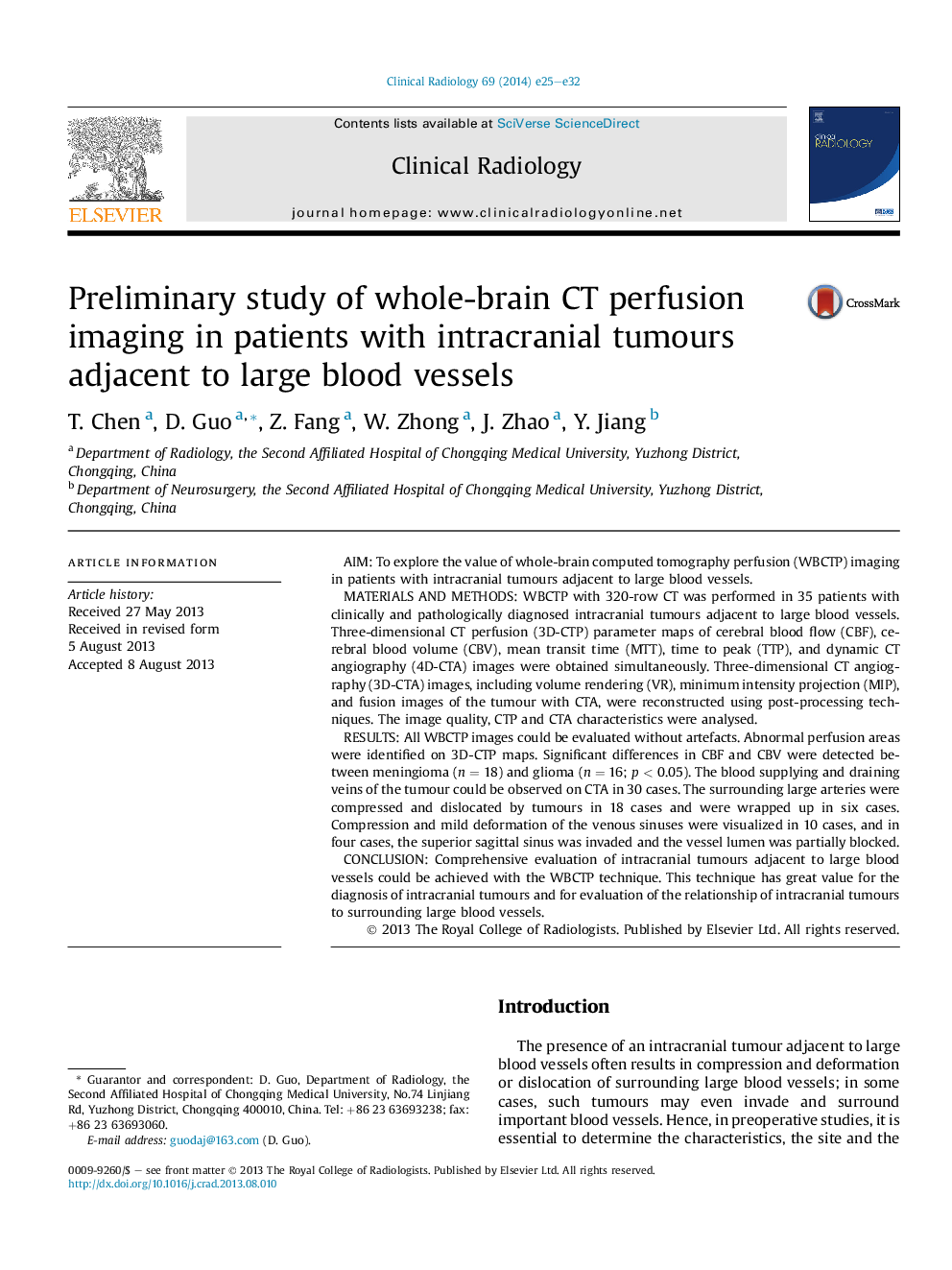| Article ID | Journal | Published Year | Pages | File Type |
|---|---|---|---|---|
| 3981717 | Clinical Radiology | 2014 | 8 Pages |
AimTo explore the value of whole-brain computed tomography perfusion (WBCTP) imaging in patients with intracranial tumours adjacent to large blood vessels.Materials and methodsWBCTP with 320-row CT was performed in 35 patients with clinically and pathologically diagnosed intracranial tumours adjacent to large blood vessels. Three-dimensional CT perfusion (3D-CTP) parameter maps of cerebral blood flow (CBF), cerebral blood volume (CBV), mean transit time (MTT), time to peak (TTP), and dynamic CT angiography (4D-CTA) images were obtained simultaneously. Three-dimensional CT angiography (3D-CTA) images, including volume rendering (VR), minimum intensity projection (MIP), and fusion images of the tumour with CTA, were reconstructed using post-processing techniques. The image quality, CTP and CTA characteristics were analysed.ResultsAll WBCTP images could be evaluated without artefacts. Abnormal perfusion areas were identified on 3D-CTP maps. Significant differences in CBF and CBV were detected between meningioma (n = 18) and glioma (n = 16; p < 0.05). The blood supplying and draining veins of the tumour could be observed on CTA in 30 cases. The surrounding large arteries were compressed and dislocated by tumours in 18 cases and were wrapped up in six cases. Compression and mild deformation of the venous sinuses were visualized in 10 cases, and in four cases, the superior sagittal sinus was invaded and the vessel lumen was partially blocked.ConclusionComprehensive evaluation of intracranial tumours adjacent to large blood vessels could be achieved with the WBCTP technique. This technique has great value for the diagnosis of intracranial tumours and for evaluation of the relationship of intracranial tumours to surrounding large blood vessels.
